What is Network Cable Management?
Network cable management is a device used to manage and organize network cables, which can neatly arrange and organize various types of network cables. It has been widely used in various network cabling applications
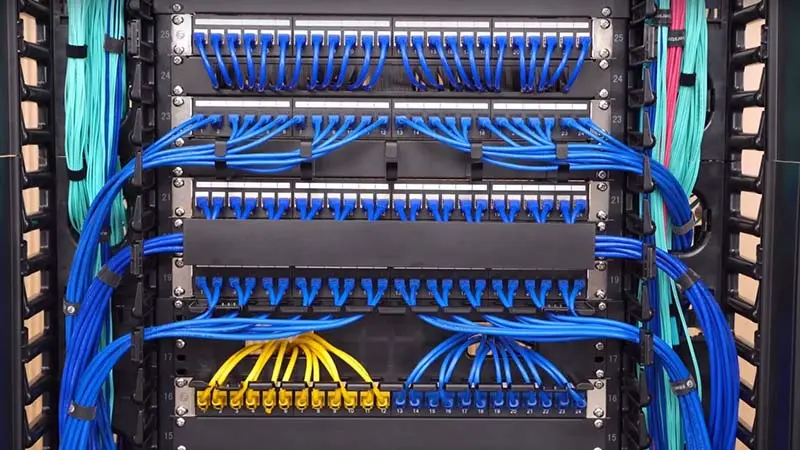
Types of Network Cable Management
Network cable management can be divided into horizontal cable management and vertical cable management. They have slight differences in installation methods and application scenarios.
Horizontal Cable Management
Horizontal cable management is suitable for cable management in the horizontal direction, usually installed in front of racks or network cabinets, and used in conjunction with patch panels to provide convenient connection management.
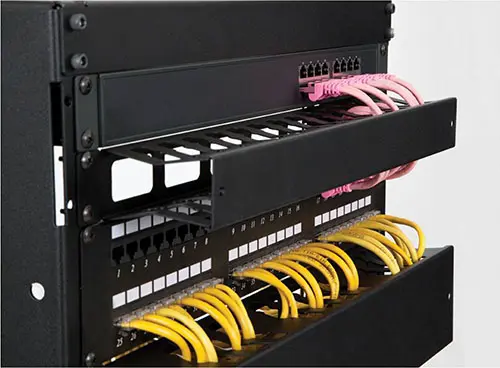
Vertical Cable Management
Vertical cable management is used to manage and organize network cables in the vertical direction. It is typically installed on the side of network racks or cabinets. Vertical cable management aims to vertically secure and route cables, ensuring proper cable management and eliminating the risk of cable damage or blockage.
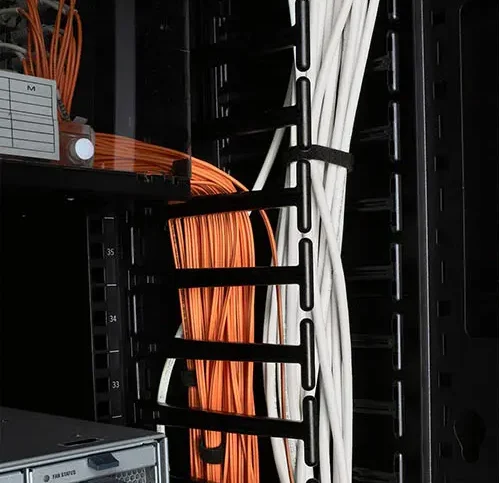
In addition, there are many styles of cable management based on different appearances, including cover type, ring type, and brush type cable management, etc.
Ring Type Cable Management
Ring type cable manager is a cable organizer with a ring structure that allows cables to be arranged and secured along the path of the ring, ensuring neat and orderly cable installation. Cables can be easily inserted and removed through the ring without the need to disassemble and reassemble the cable management panel itself.
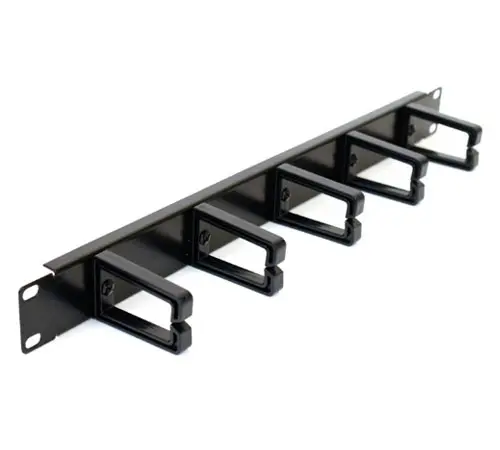
Cover Type Cable Management
Cover type cable manager is composed of multiple horizontal slots and a detachable or openable cover. The cover hides the cables, preventing them from being damaged by dust, dirt, liquid, and other external factors. It also prevents the cables from being touched or tangled. Additionally, it reduces the risk of accidental contact with the cables by personnel and other equipment, minimizing safety hazards and making cable operations safer and more reliable. It also reduces cable clutter and creates a more organized appearance for the entire wiring system, contributing to a tidy and aesthetically pleasing cable installation.
The cover can be opened or moved, facilitating inspection, maintenance, and replacement of cables.
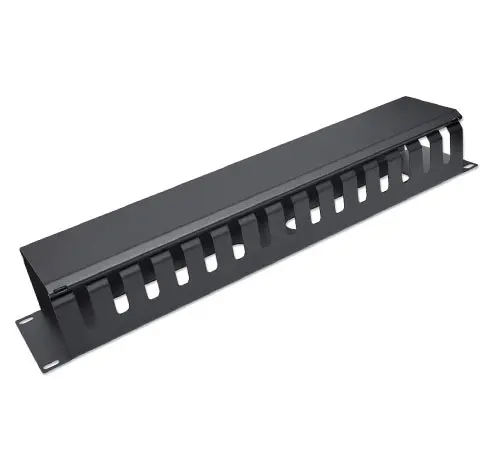
Brush Type Cable Management
Brush type cable manager is a network cable management with brushes to assist in managing cables. The brushes are located at the entrance and exit of the rack to prevent dust, dirt, and other debris from entering the rack. Brushes can also reduce friction between cables and racks, preventing cable wear and damage. The brush can be adjusted and moved according to the size and quantity of cables to meet different wiring requirements.
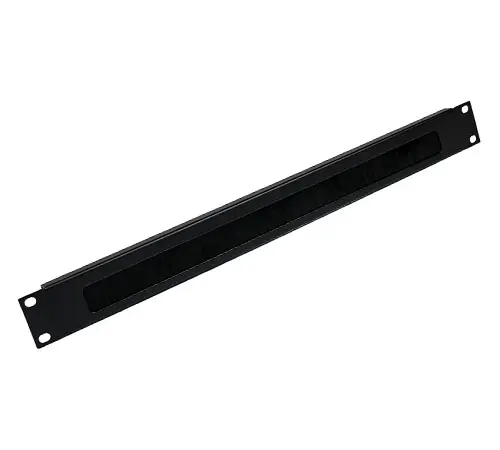
Functions of Ethernet Cable Management
Cable Management
Provide a centralized cable management method to avoid cable confusion, entanglement, and crossing, provide a clear wiring structure, and ensure orderly wiring.
Troubleshooting and Maintenance
Facilitate cable identification and tracking, cable search and replacement, and improve the reliability, security, and maintainability of network systems.
Ventilation and Heat Dissipation
Network cable manager is designed with ventilation holes or channels to facilitate air circulation, effectively dissipate the heat generated by the equipment, maintain normal operating temperature, and improve the overall efficiency and reliability of the network system.
Maintain Business Organized
Ethernet cable management can reduce cable stress, prevent cable damage, tripping, or accidental pulling, extend cable life, and improve network and equipment performance and efficiency.
Gcabling Network Cable Manager
Gcabling can supply a wide range of Ethernet cable management with different types, here we list some hot-selling products.
*More fiber patch cable types, please contact Gcabling for information!

